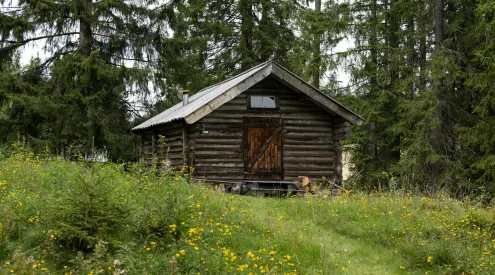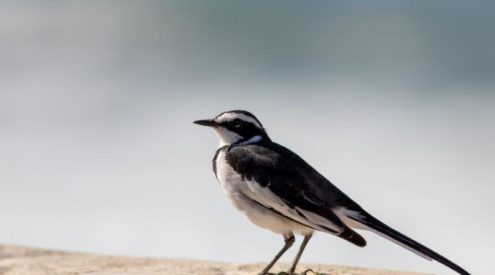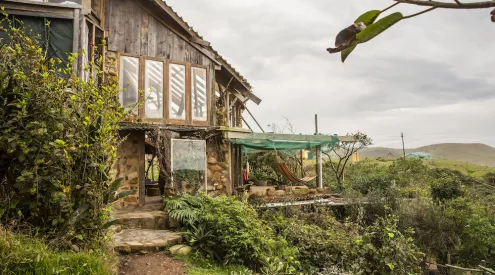The most abundant wild bird species on Earth, the red-billed quelea, calls places such as the Kalahari home. The adult population of this weaver species, which occurs only in Africa, is estimated to be three billion, with some scientists suggesting the number might top 10 billion.
Arid landscapes are often the preserve of photographers, painters and poets – dawn and dusk inspire spectacular digital images, the flush of flowers after rain fills canvases with exuberant colour, and the shadows and melancholy of lonely vistas infuse sonnets and soliloquies. But these dry regions and their vast skies are alive with unique bird species in spectacular numbers.
During the breeding season, males change from a cryptic beige (similar to the plumage of the females) to display a bright red bill, a mask that ranges from pitch black to white, as well as breast and crown plumages which vary from yellowish to a brilliant ruby splash.
They’re nomadic, as is often the case with arid bird species, and they roam in huge flocks of up to a million individuals. When you’re next in a desert, look out for what seems to be a low-flying cloud; you could be in for an avian display of epic proportions.
Another quirky weaver species of our arid areas is the sociable weaver. The distinctive, sparrow-like bird has a dark grey bill, black mask and a scaly back, with no discernable difference between the sexes. What’s really exciting about these birds lies not in their appearance, but rather in their architectural skills. They make the largest nest of any bird on Earth, sometimes containing up to 500 chambers and accommodating 100 pairs.
They’re wonderfully gregarious, co-operative breeders living in communal thatched nests. The magnificent condominiums are structurally fastened to the thick limbs of trees, telephone poles and even windmills. The thousands of poles that line our roads have facilitated the expansion of the species’ range.
The large nests provide the birds with a way of conquering the harsh desert environment, where extremes in temperature are common. Central chambers retain heat and are used for night-time roosting, while the cooler outer chambers are used for shade during the day, as outside temperatures soar.
Other bird species take advantage of the sociable weavers’ design talents. The most common of these is the pygmy falcon, which lives in harmony with its landlords, eating a nestmate only on the rare occasion. Red-headed finches use the nests for breeding, while acacia pied barbets and ashy tits use them for roosting. When scanning one of these nests with your binoculars in search of other species, don’t forget to look on top: if you’re lucky you might find an owl lurking quietly as they use the structures as platforms for their own nests.
Tracking local avian species
BirdLife South Africa is working with the South African Biodiversity Institute (SANBI) and the University of Cape Town’s Animal Demography Unit to document distribution patterns and changes in population numbers. Bird-watchers are recording the occurrence, abundance and movements of SA’s bird species for the Southern African Bird Atlas Project 2. This scientific information is going to become valuable in understanding habitat change, climate change and the threatening issues of desertification. www.birdlife.org.za
(Photograph by Lee Slabber)


















